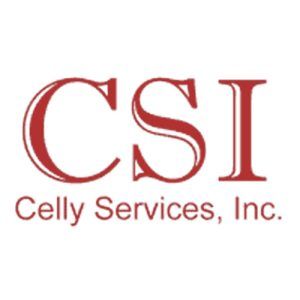As of Jan. 1, 2022, the hazardous waste Generator Fee has been repealed and replaced with a new Hazardous Waste Generation and Handling (GH) fee. Prior to Jan. 1, 2022, the hazardous waste generator fee was imposed on a tiered category basis. The state of California sent out the special notices on GH in December 2021 and August 2022.
Effective Jan. 1, 2022, the hazardous waste generation and handling fee is imposed as a flat rate per ton or fraction of a ton on generators of hazardous waste for each generator site that generates five or more tons of hazardous waste at a site in California within a calendar year.
Hazardous wastes typically generated at an automobile dealership and subject to this fee are:
- Recycled hazardous waste
- Non-manifested universal waste
- Waste sent outside California for disposal
- Used motor oil (except used oil collected from the public. See note below.)
- Waste coolant (CA code 134),
- Oily water (CA Code 223), and
- Waste paper filters (CA code 352 or 223)
- Waste brake fluid
- Contaminated fuel
If you are punching or crushing metal oil filters, under the Department of Toxic Substances Control (DTSC) guidelines you can dispose of them as scrap metal (through your hazardous waste hauler) and hence not be subject to this fee. If you decide to dispose of used metal oil filters as hazardous waste, those metal filters get added to your hazardous waste tonnage calculations.
GH Fees & Fee Returns: How Calculated & When Due
The GH fee is calculated based on the total weight (measured in tons) of hazardous waste generated (produced or caused to be managed) from each site each calendar year. It is generally due regardless of the waste’s final disposition. Every generator that produces five tons or more of hazardous waste will pay the California Department of Toxic Substances Control (CDTFA) a GH Fee for each generator site for each calendar year, or portion thereof. Generators are required to report the amount of waste generated on a hazardous waste Generation and Handling Fee Return provided by CDTFA. Keep proper records to support tonnage of hazardous waste generated and handled at each site/location.
Don’t Know Your Tonnage?
Please contact your dedicated waste hauler(s) to determine total tonnage. Once determined, please register online with CDTFA at https://onlineservices.cdtfa.ca.gov/_/ and complete the fee process. You are required to file your GH Fee Return electronically through the CDTFA online services. Maintain support documentation of fee completion for your records. Finally, we note that this is a tax/fee matter and you must consult your tax consultant on calculations and record retention requirements.
GH fee payments and GH fee returns are both due by February 28 each year (RTC 43152.7) The fee is calculated based on waste generated in the prior calendar year (HSC 25205.5). Beginning Jan. 1, 2022, all GH fees are due according to the schedule in the table below, along with the GH Fee rates in 2022/23 for hazardous waste generated in Calendar Year 2021.


Note 1: Commencing on July 1, 2023, the Board of Environmental Safety will reset (increase) the annual GH Fee to correspond to the annual appropriation amount for Fiscal Year 2023/24, per Health & Safety Code section 25205.5.01. Beginning with FY 2024/25, the Board shall adjust the GH Fee for changes to the Consumer Price Index (CPI).
Note 2: Please contact your waste hauler(s) for technical guidance on conversion of gallons of waste to tons. For example, 1 gallon of used oil is approximately 7.4 pounds. 10,000 gallons is 74,000 pounds. 2,000 pounds equals one ton. 74,000/2,000 = 37 tons. In summary, 10,000 gallons of used motor oil weigh approximately 37 tons!
Note 3: GH Fees do not apply to used oil collected from the public by certified used oil collection centers.
Contacts at CDTFA
Cathie Thomas at Cathie.Thomas@cdtfa.ca.gov, Kevin McCarley at Kevin.McCarley@cdtfa.ca.gov, and Yatoba Godina at Yatoba.Godina@cdtfa.ca.gov or call 800-400-7115.
DISCLAIMER: The contents of this newsletter are for informational purposes only and are not to be considered legal advice. Employers must consult their lawyer for legal matters and EPA/OSHA consultants for matters related to Environmental, Health & Safety. The article was authored by Sam Celly of Celly Services, Inc. who has been helping automobile dealers in Arizona, California, Hawaii, Idaho, Nevada, New Mexico, New York, Texas and Virginia comply with EPA and OSHA regulations for over 35 years. Sam is a Certified Safety Professional (No. 16515) certified by the National Board of Certified Safety Professionals. Sam received his BE (1984) and MS (1986) in Chemical Engineering, followed by a J.D. from Southwestern University School of Law (1997). Sam is a member of the American Chemical Society (No. 31176063), American Industrial Hygiene Association (No. 124715), and National Association of Dealer Counsel (NADC). Sam also serves on the Board of Orange County American Industrial Hygiene Association and on CA Industrial Hygiene Council (CIHC). Our newsletters can be accessed at www.epaoshablog.com. We welcome your comments/questions. Please send them to sam@cellyservices.com.
©Celly Services, Inc.







